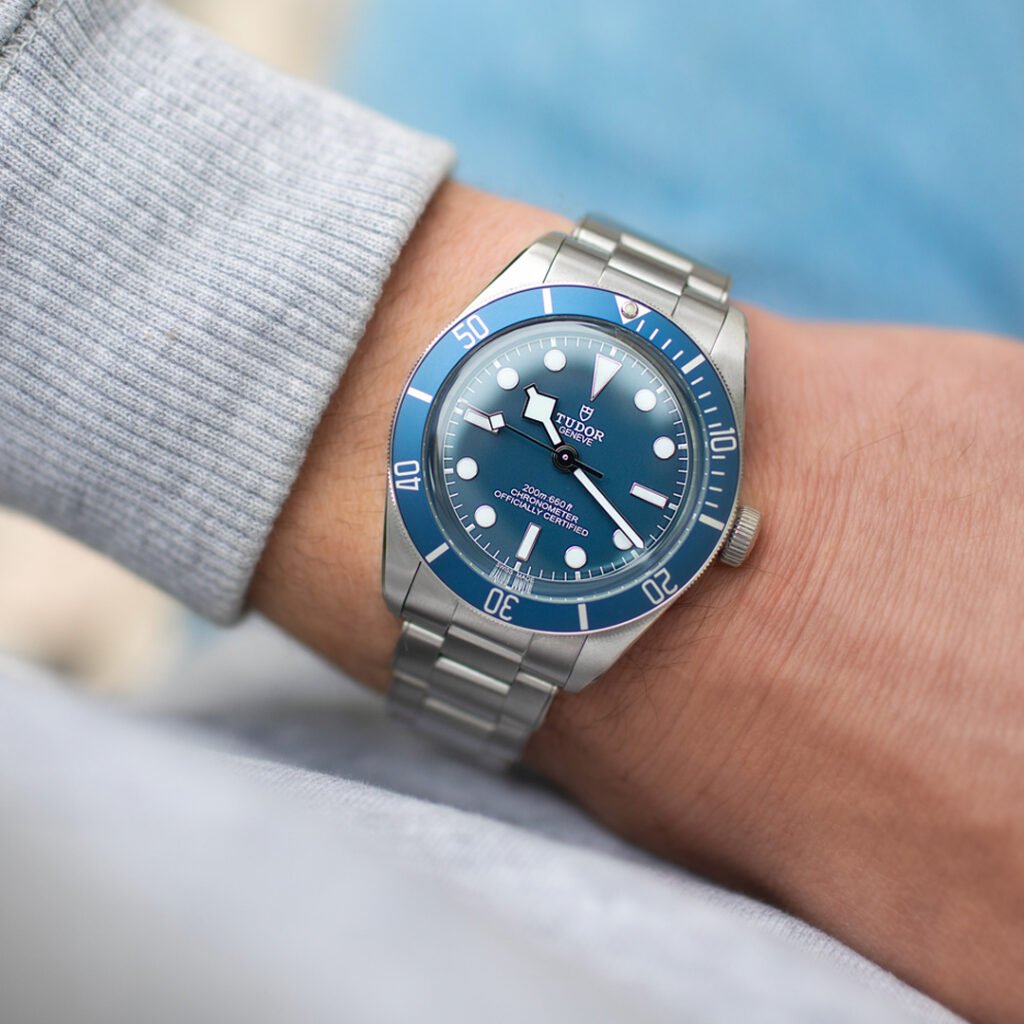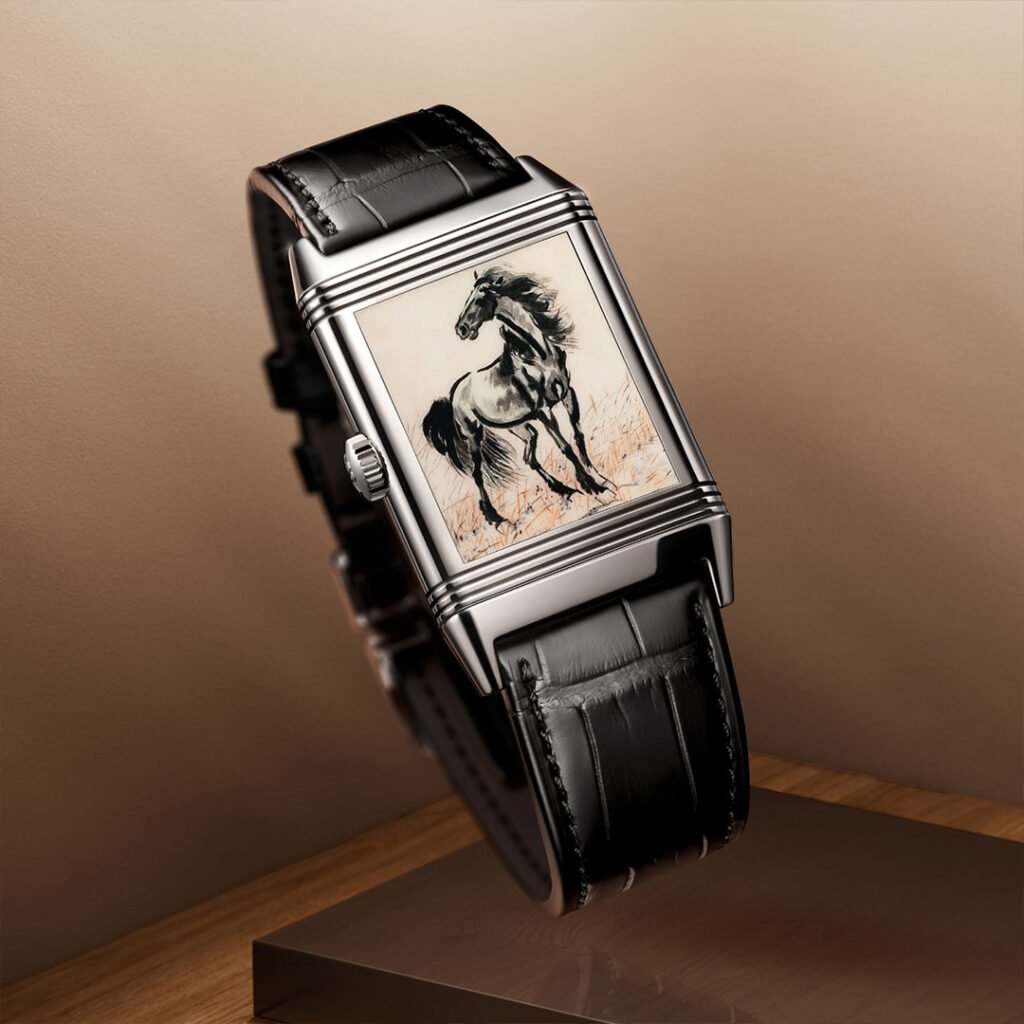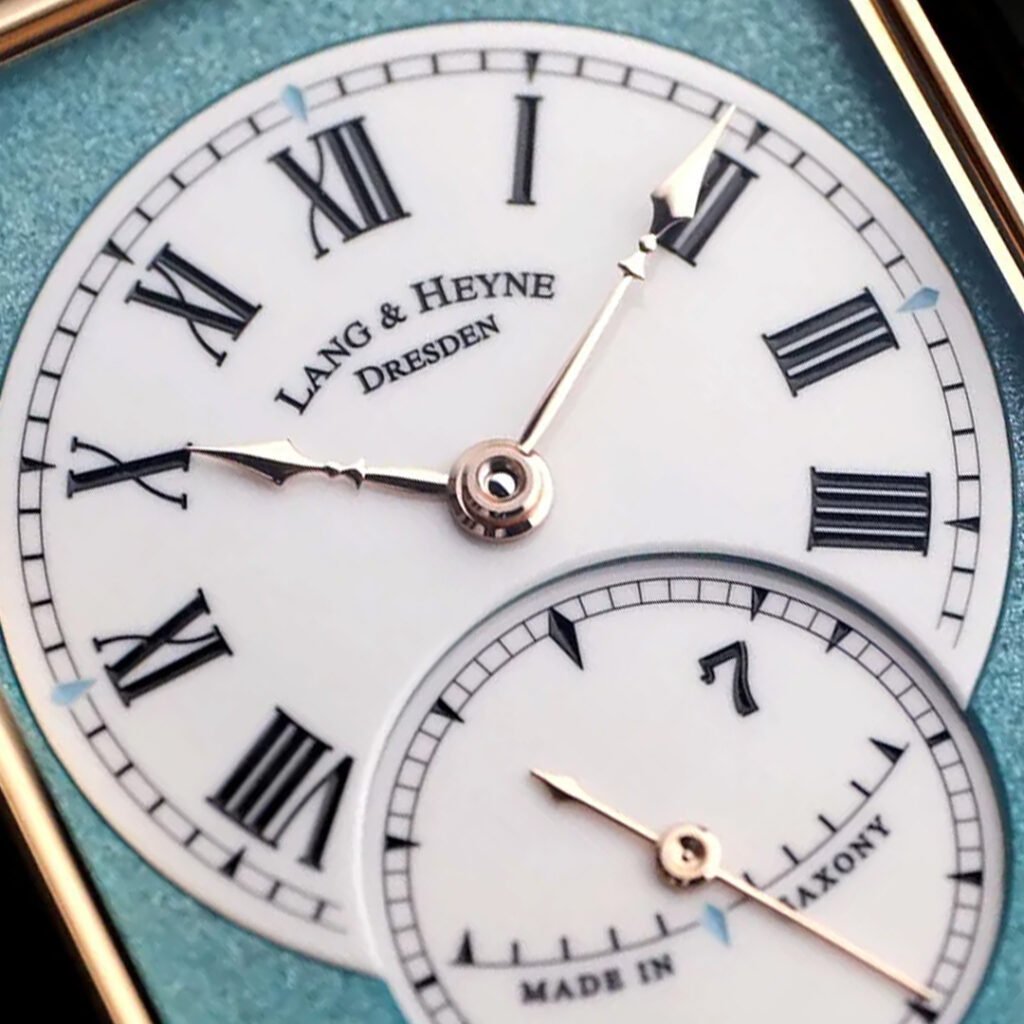Bezl meets Johan, a collector and enthusiast with deep experience in Audemars Piguet. Over coffee in Stockholm, we talk about a Royal Oak reference that often flies under the radar: the 15300ST with a white dial. While the spotlight usually falls on the blue or black versions, the white dial tells a story of its own – one of elegance, balance, and subtle distinction.
Among the many iterations of the Royal Oak, the 15300ST with a white dial stands out as one of the most subtle, yet iconic. It may not attract the same attention as the blue or black versions, but precisely because of that, it deserves a closer look.
What makes the Royal Oak 15300ST with a white dial especially interesting to you?
The white dial has a completely different presence. Instead of blending in, it reflects light in a way that makes the whole watch appear more refined. It’s a sports watch, but in the right setting it almost feels dressy.
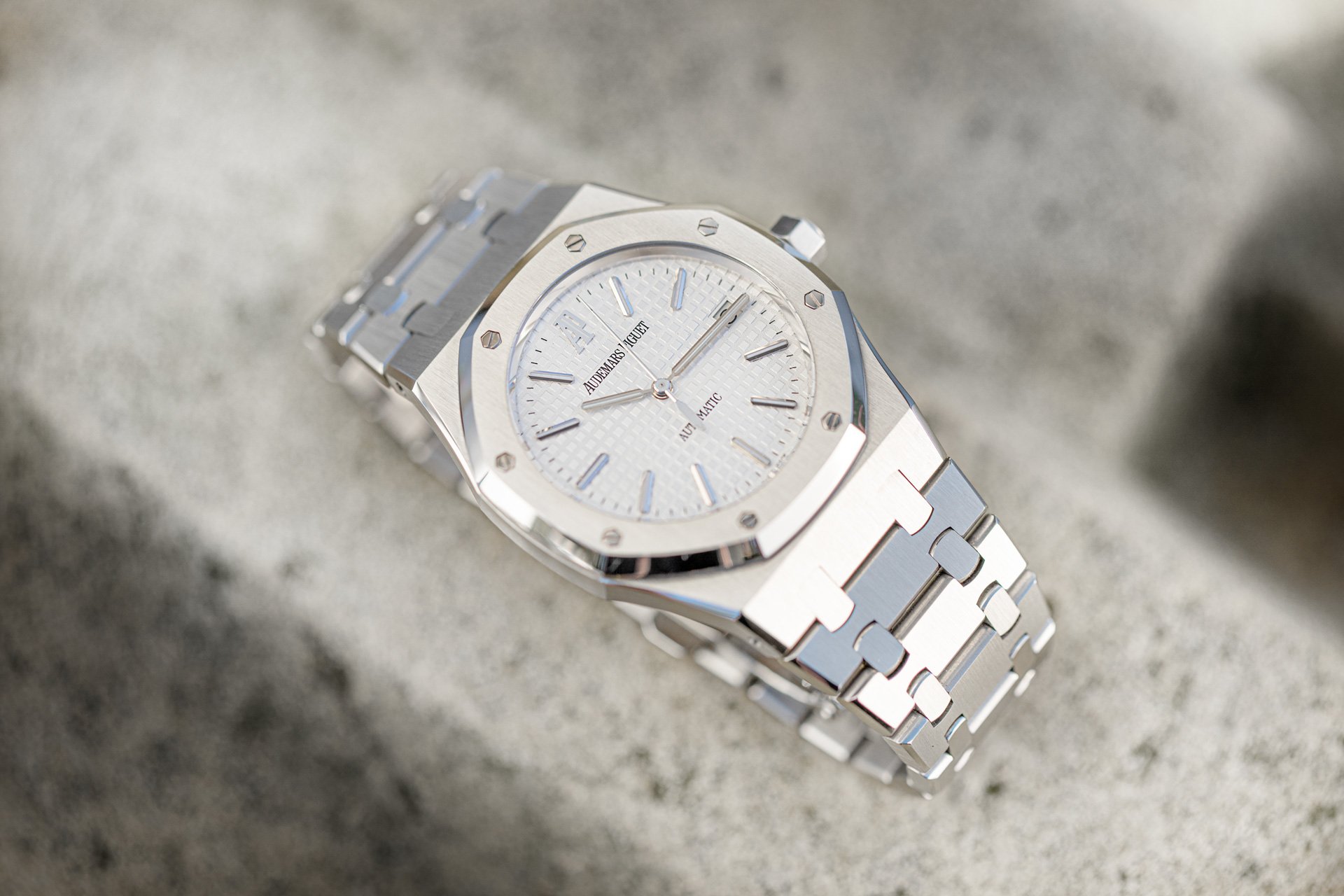
The Royal Oak 15300ST – 39 mm of steel with a white tapisserie dial
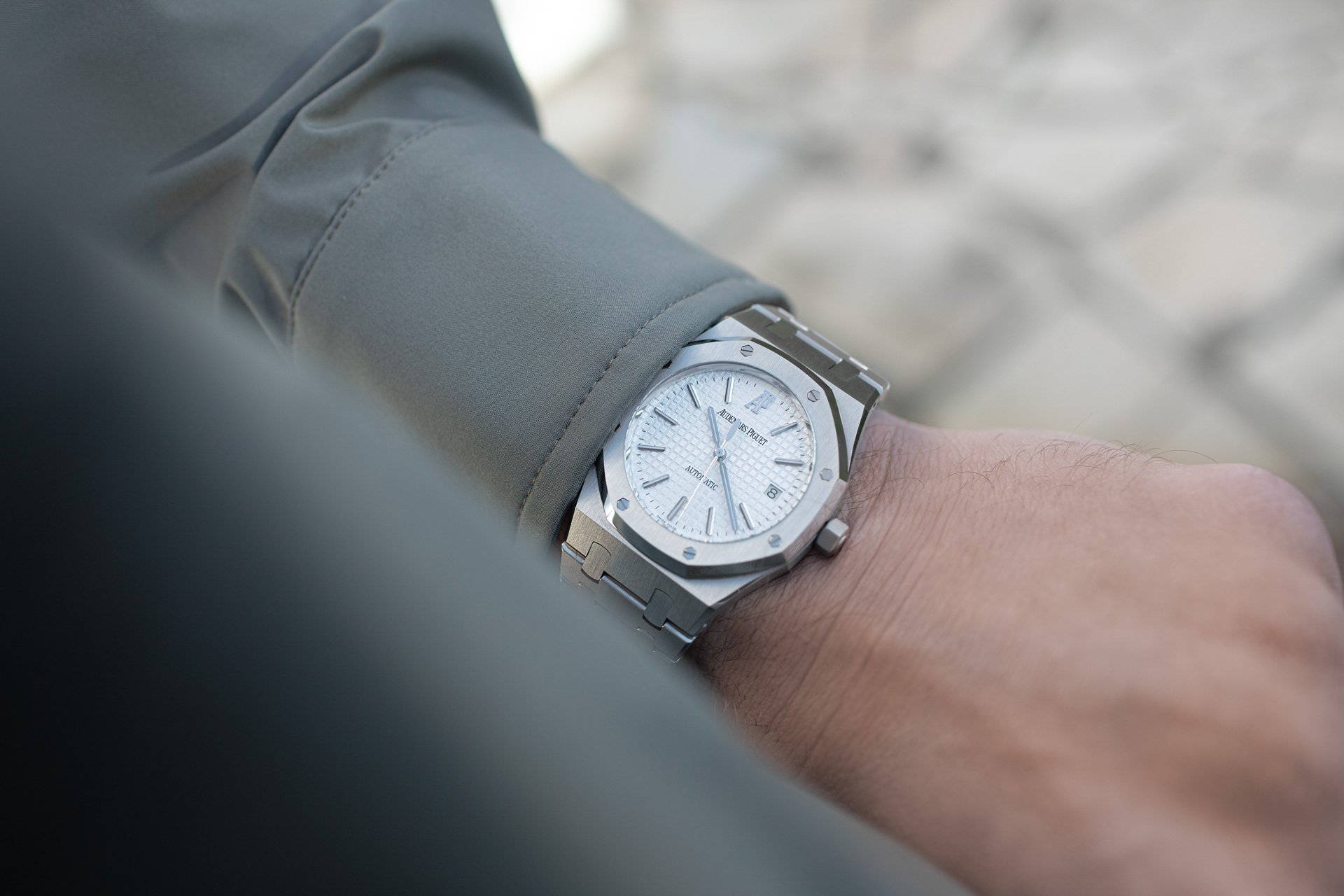
The white dial makes the signature tapisserie pattern shine with clarity and light.
Where does the 15300ST fit into the history of the Royal Oak?
The model was introduced in 2005 as a modern interpretation of the 1972 original. It measures 39mm, the same as the very first Royal Oak “Jumbo,” but it’s thicker and carries more weight on the wrist.
How does the 15300ST differ from the 15202ST?
The 15202 stays closer to the original – ultra-thin, two hands, and date. The 15300 brought in a central seconds hand and a more practical layout. It was also the first to feature the in-house caliber 3120, with longer power reserve and a beautifully finished gold rotor.
How does the white dial compare with the blue or black versions?
The white dial changes the whole character. It makes the tapisserie pattern stand out more clearly and adds brightness. On the wrist, it sometimes feels larger than 39mm because of the light dial against the steel case.
The Royal Oak 15202 – the ultra-thin icon that stays truest to Gérald Genta’s 1972 design, timeless in both form and spirit.
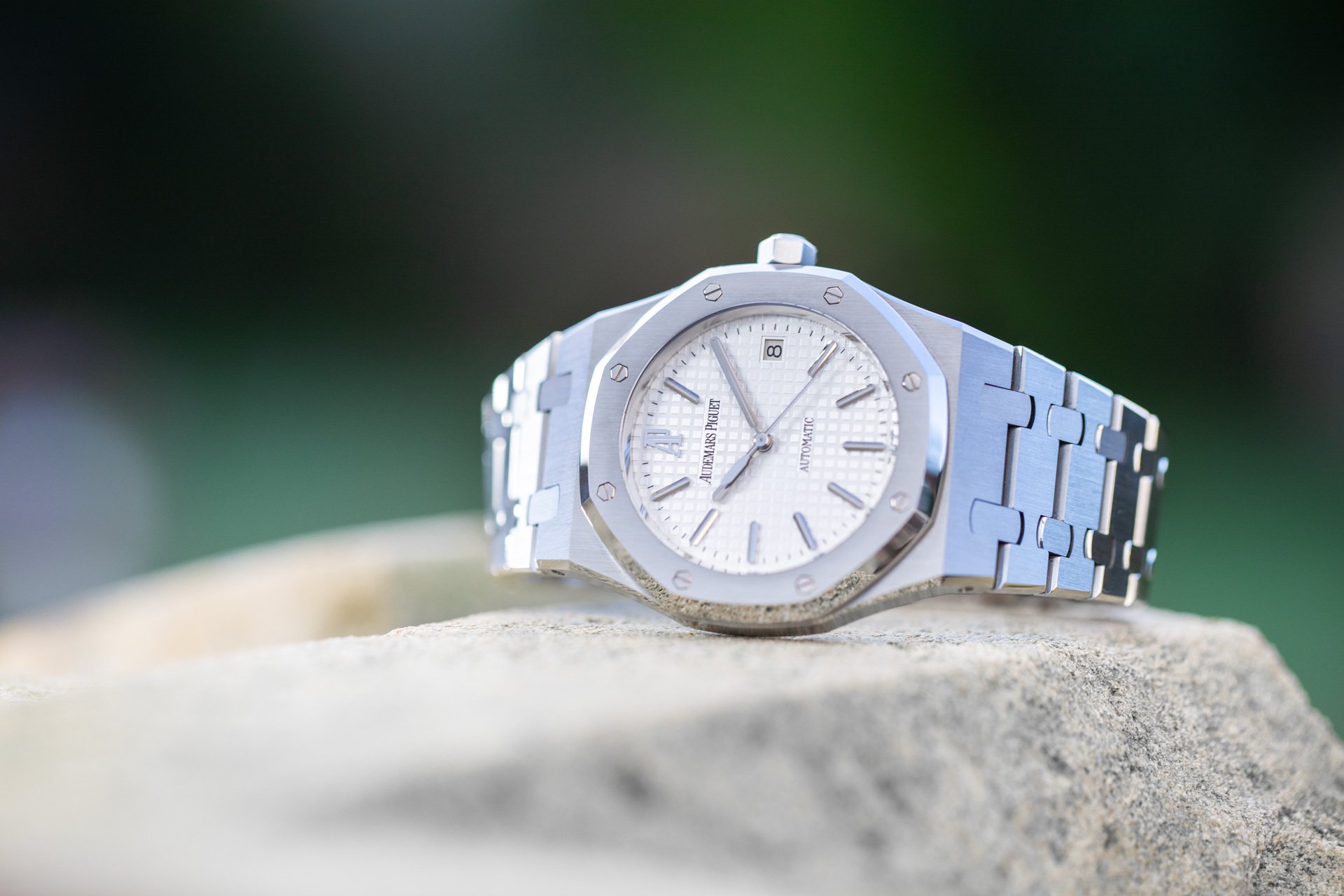
From boardroom to weekend – versatility has always been part of the Royal Oak’s DNA.
Would you say the 15300ST with a white dial is underrated in the market?
Absolutely. Collectors often chase the blue dial because of its historical significance, but the white version is far less common in the wild. It offers a distinctive look that doesn’t follow the crowd.
What can you tell us about the caliber 3120?
It’s an excellent movement: reliable, well-finished, and with a 22k gold rotor engraved with the AP coat of arms. It marked a turning point for Audemars Piguet, moving decisively into a modern era of in-house production.
How does the 15300 wear day to day?
The bracelet is comfortable, the finishing is dazzling, and the white dial makes it easy to pair with both a shirt and a t-shirt. It has presence, but never feels over the top.
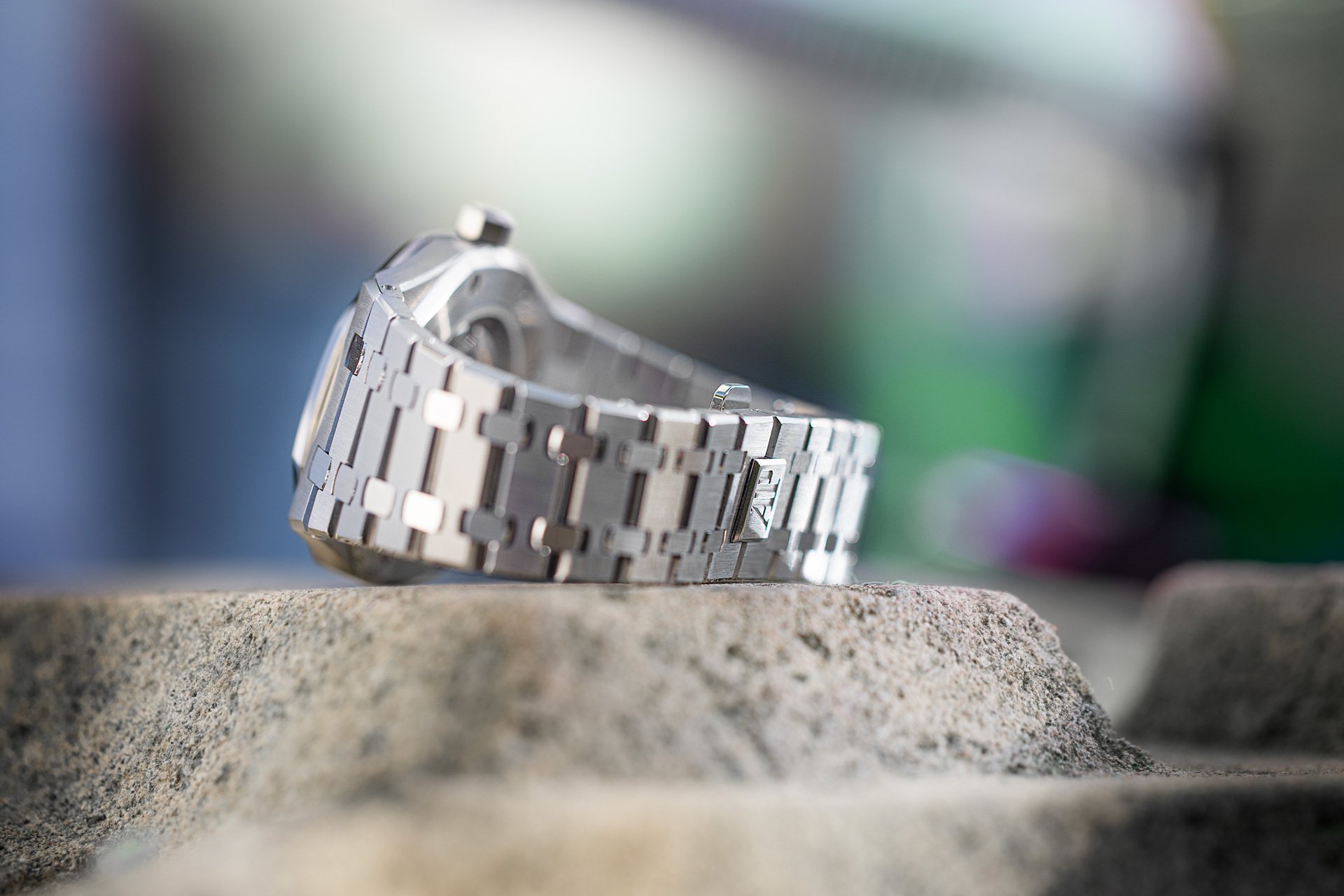
Introduced in 2005, the 15300ST carried Audemars Piguet into a new era with the in-house caliber 3120.
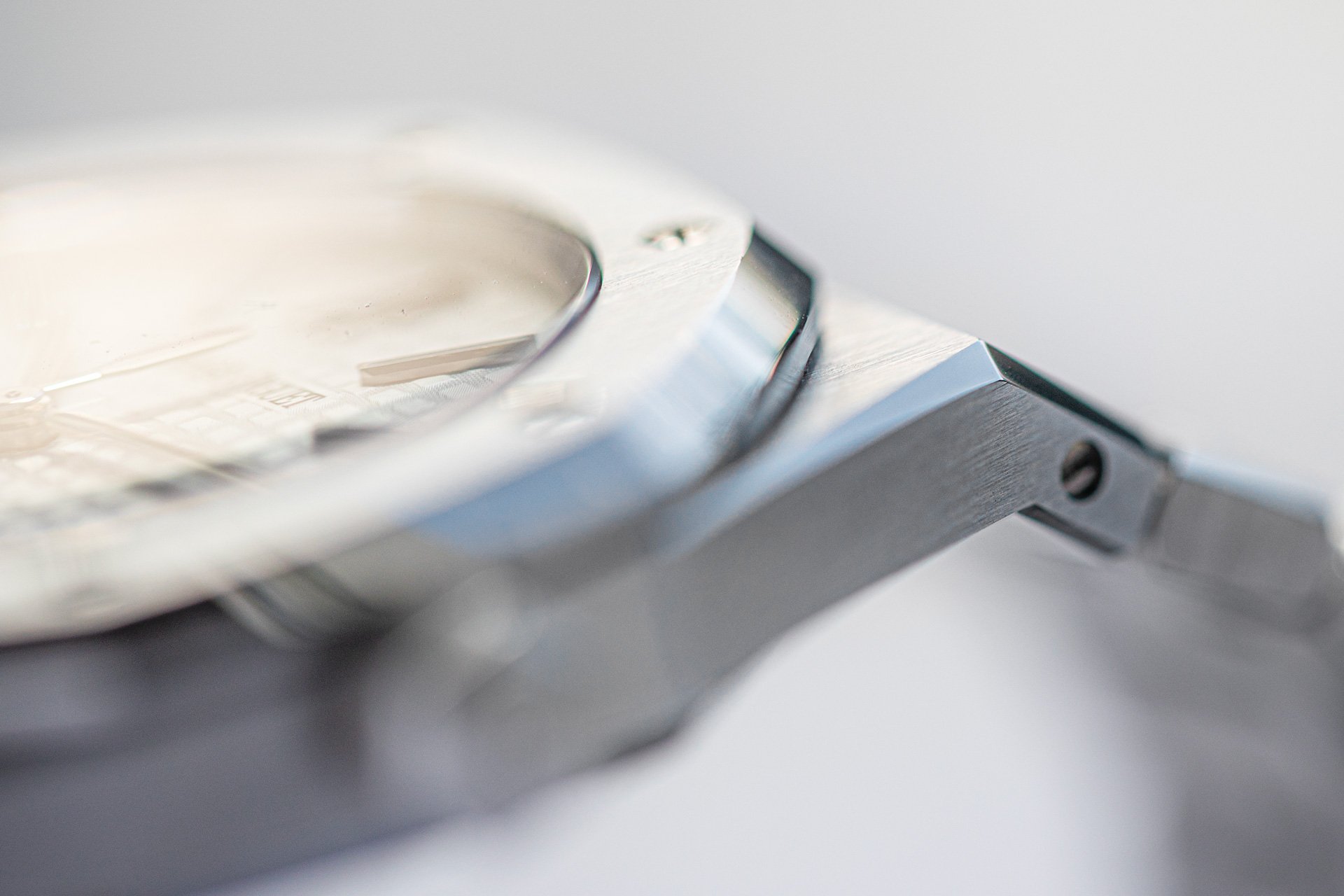
Thicker than the legendary 15202, the 15300 adds presence without losing elegance.
What’s your view on its future value?
The model has already appreciated since it’s no longer produced. It’s a bridge between the classic and the modern Royal Oak, which makes it appealing. I think the white dial will remain something of a “quiet classic” among collectors.
What do you see as the strongest qualities of the model?
Balance. It’s sporty yet refined. It carries the historical dimensions but has a modern movement. And the white dial makes it stand out in a way that’s subtle rather than loud.
Finally – why would you recommend someone choose the white dial?
Because it’s understated yet distinctive. It feels less predictable than the blue version, but all the more personal. If you want a Royal Oak that stands apart without shouting, this is the one.
Thank you, Johan, for your time and for sharing your expertise on this model.
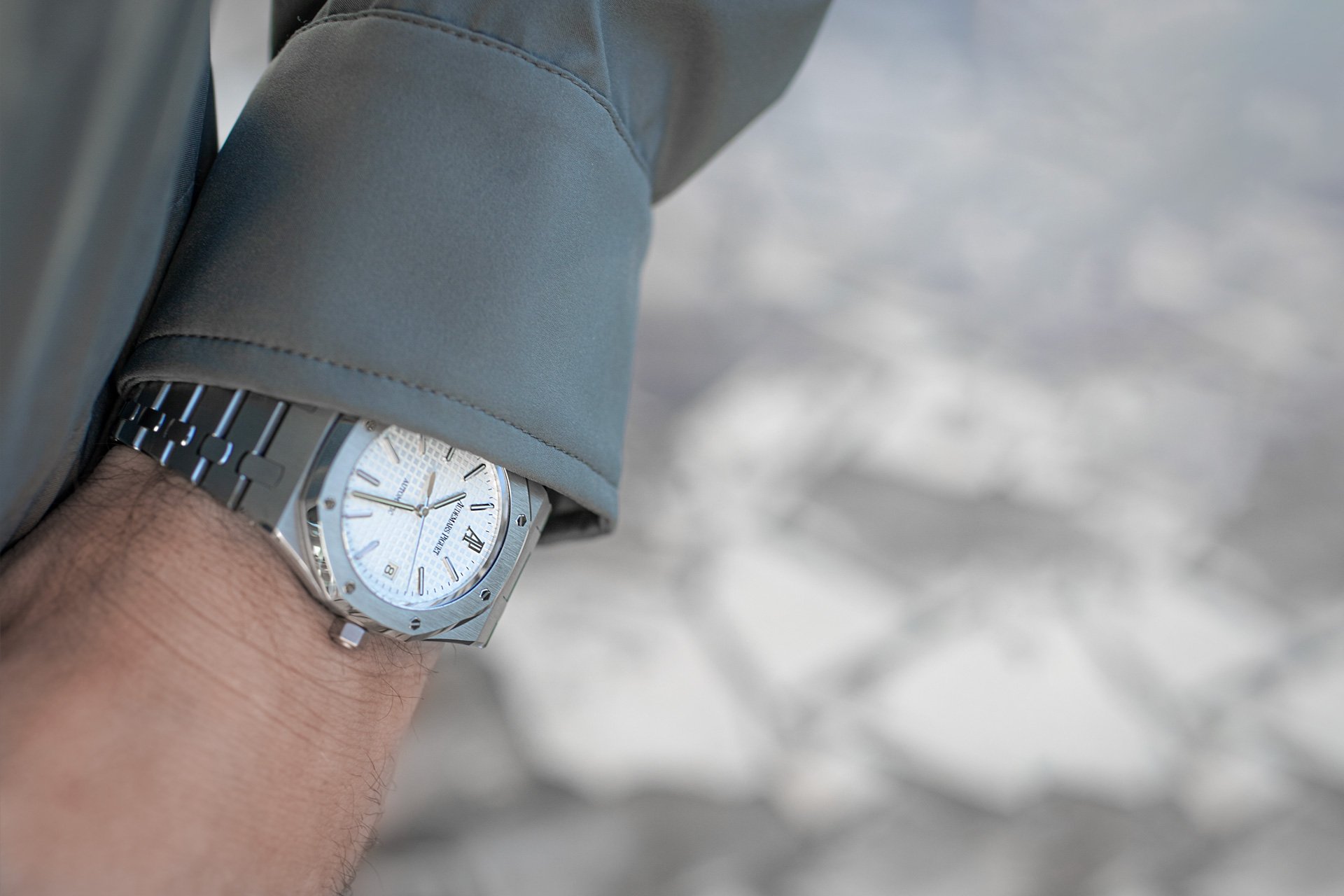
Every angle reveals Gérald Genta’s original vision, reinterpreted for the modern collector.
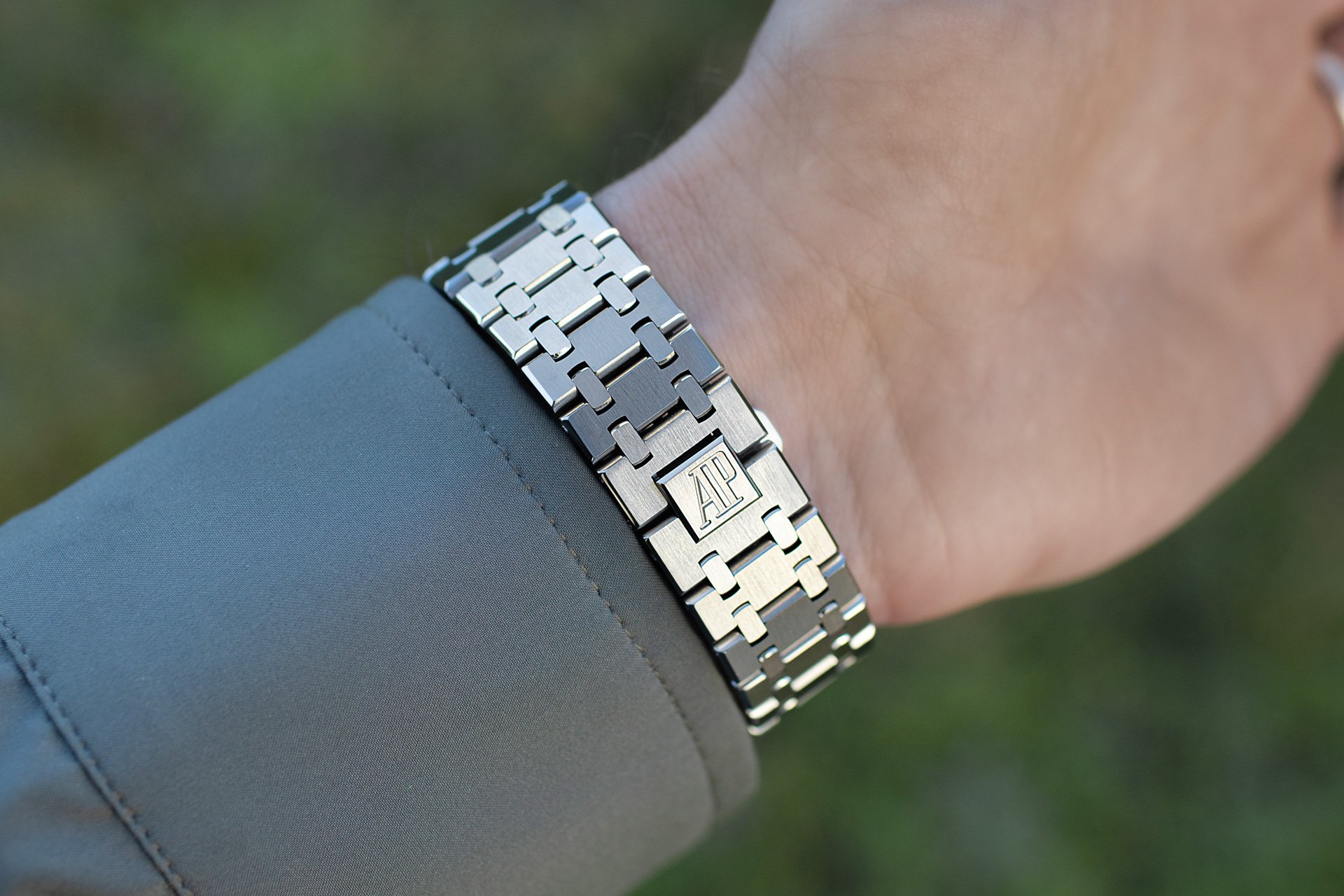
The steel bracelet, finished with hand-polished bevels, remains one of the most recognizable in watchmaking.
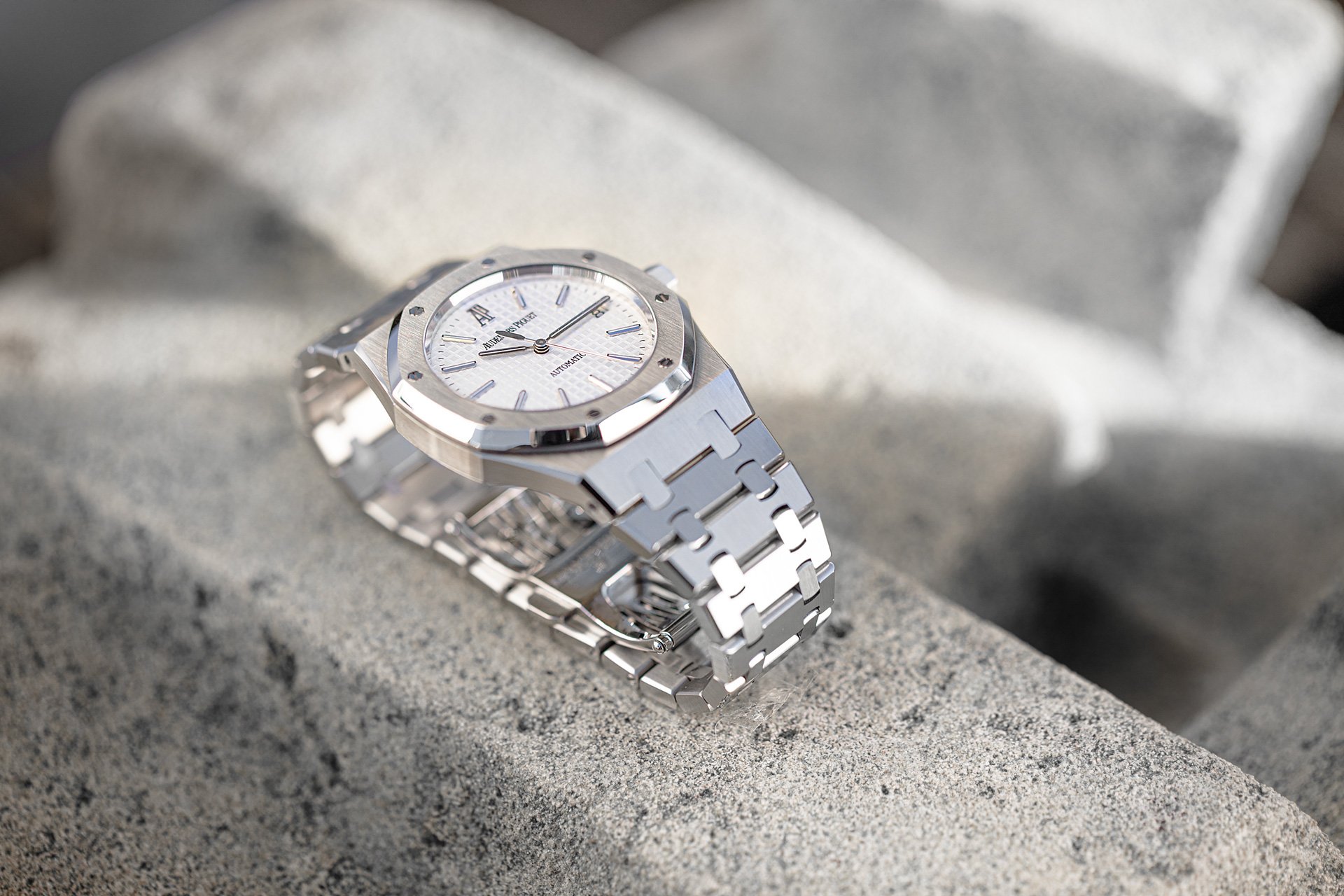
Sporty in spirit, refined in execution – the Royal Oak that bridges past and present.
Lastly
I once owned the Royal Oak 15300ST with a white dial, and it quickly became one of the most enjoyable watches I’ve ever had. On the wrist, those classic 39mm proportions felt just right – neither too bold nor too discreet. The white dial gave the watch a fresh, almost sporty character, and in many ways it became my perfect summer watch. It had that rare ability to move effortlessly from the pool in the afternoon to dinner in the evening, never feeling out of place.
If I had to point out a drawback, it would be the seconds hand. Personally, I would have preferred the cleaner look of a two-hand layout, and the counterweight made it stand out more than I liked. The thicker bracelet of the 15300 also took some getting used to. But these are small details in the bigger picture. Overall, the 15300ST was a fantastic piece – elegant, versatile, and full of presence. Even after letting it go, I still think of it as one of the most complete versions of the modern Royal Oak.

